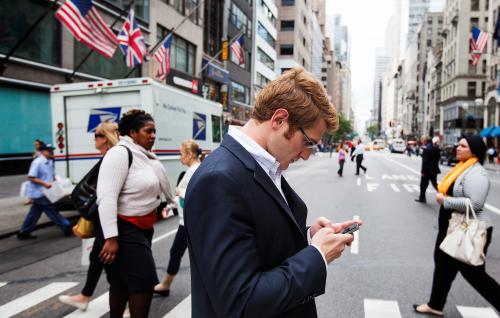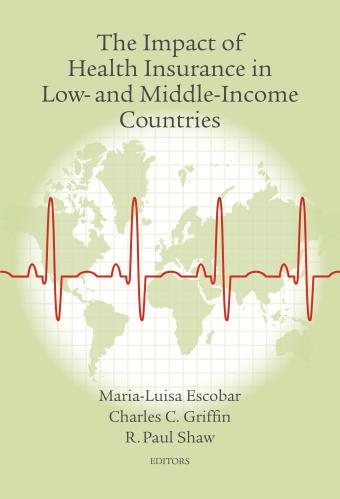This article originally appeared in the Wall Street Journal on April 25, 2017.
At a time of volatile household incomes and widespread economic insecurity, the latest innovations in financial technology may help bring some peace of mind and a little stability to financially stressed American families.
The past few years have seen a proliferation of apps designed to help families—not rich people looking to allocate 401(k) retirement accounts, but the larger number struggling to make it from paycheck to paycheck, coping with the uncertainty of everyday life and trying to keep the promises they made to themselves to save.
“In the U.S. we don’t really have an access-to-banking problem,” says Jennifer Tescher, president of the Center for Financial Services Innovation, a nonprofit that aims to help the industry better serve low- and moderate-income consumers. After all, 93% of U.S. households have bank accounts, according to the latest Federal Deposit Insurance Corp. data. “The bigger issue is: Can we use technology to help people better manage their financial lives?”
The financial strains that afflict many American households are well documented. About 12% of respondents to a 2015 Federal Reserve survey
The JPMorgan Chase Institute, sifting through data on one million Chase customers from 2012 to 2015, found that more than half experienced greater than 30% month-to-month changes in income; for Chase’s lowest-income customers, it was three-quarters.
And scrutiny of 235 low- and moderate-income families in four communities, detailed in a new book, “The Financial Diaries: How American Families Cope in a World of Uncertainty,” found that the households typically experienced five months a year in which spending was either 25% above or below the monthly average.
So now come the apps, a slice of what has come to be known as fintech—technology that is changing the financial industry.
A three-year-old app called Even, for instance, is a response to the volatility of some people’s income. Based on past paychecks, Even estimates the amount a person makes on average, advancing money on bad weeks that the user pays back on a good week. The cost of the credit extended is covered by a subscription fee—$3 a week for individuals, though for many users employers subscribe and offer Even as an employee benefit. The company has raised $12 million in venture capital.
Another app, Digit, from Hello Digit Inc., attempts to make saving easier. A user gives the app access to his or her checking account. It analyzes income and spending patterns, decides how much one can afford to save at any given time and automatically moves that sum into a Digit savings account, often just a few dollars every couple of days. “We believe so strongly in our math and our ability to safely identify money you can afford to save that if we overdraft your account, we’ll cover the fee, up to two times per customer,” Digit says. The two-year-old company effectively pays interest at a 1% annual rate on the $500 million it has accumulated in user savings, and makes its money by investing at a higher rate. It has raised $36 million in venture funding.
The Prism app, from Prism Money, began by simply putting all of a user’s bills in one app to cut down on the hassle of keeping track of them all. But the founders realized that managing the payment of bills was a huge source of stress to many people and shifted their focus to helping users with that, says Tyler Griffin, until recently Prism’s CEO and now entrepreneur in residence at the Center for Financial Services Innovation. Users connect the app to their bank accounts and monthly bills. The app reminds users when a bill is due and allows them to pay it with one click. It alerts users if a bill payment will trigger an overdraft, and it helps them avoid late fees by prioritizing their bills so they pay the ones due sooner first. Prism raised $3 million in venture capital before selling last year to PayNearMe, a firm that allows people to pay all sorts of bills in cash at 28,000 retail outlets.
Other fintech companies help people borrow at lower costs than they can find elsewhere. Ascend Consumer Finance makes three-year loans averaging $6,000 at annual interest rates as high as 36%, which sounds steep but is well below the annual rates of 350% or more often charged by the payday lenders many people use. Also, Ascend cuts the interest rate—halving it in some cases—in any month in which a borrower reduces his or her debt by $50 or more, saves $50 or more, or spends less than $600 on a credit card. The two-year-old company has raised $60 million in equity and debt.
This proliferation of fintech apps in the past few years is the result of a convergence of forces.
Several are technological. There is the ubiquity of smartphones among Americans of all incomes and the evolution of app stores with user-generated ratings that can quickly propel startups to popularity. There are the falling barriers to entry as more, and cheaper, software platforms and third-party services emerge on which startups rely. And there is the capacity and (sometimes grudging) willingness of big banks to let customers give fintech apps access to customers’ financial data.
At the same time, investors are pouring billions into fintech startups as a cadre of entrepreneurs—some motivated by their own frustrations with conventional banking, others looking for ways to make money by doing good—emerge. Some are deploying the lessons of behavioral economics, fashioning smartphone-based nudges to get people to do what they intend to do but often don’t.
Quinten Farmer, a co-founder of Even, emphasizes the need for app designers to talk to their customers. “The very first hire we made at Even was a user researcher,” he said at a recent forum. “It was not a popular choice with our investors; they wanted us to hire an engineer. But she has ended up being an incredibly foundational part of how our product has come together.” Every day on their morning commute, the Even team is “listening to a podcast that she put together which is interviews with the people we serve talking about the features that we’re working on building that day,” he said.
Few, if any, of these young fintech services have gone viral. Indeed, several are available only in some states, because state-by-state regulatory approvals are costly and time-consuming. Ascend, for instance, is doing business in just eight states.
Whether the startups can prove profitable while serving low- and moderate-income customers remains to be seen. “I think fintech has significant potential if policy makers and firms are intentional about wanting to serve the low-income community by lowering costs, increasing speed and improving control over one’s financial life,” says Michael Barr, a University of Michigan law professor and former Treasury Department official with a longstanding interest in consumer finance. But, he adds, “The low-hanging fruit for making a lot of money is not in poor people. It may be a very long time before the bottom of the [income] pyramid is reached. It may be that there need to be special incentives for that—regulatory relief, tax credits.”
Jonathan Morduch, a New York University professor of public policy and an economist and co-author of “The Financial Diaries,” has plenty of praise for fintech apps, but doubts they will be the ultimate solution to financial stress for many. “The apps make life easier for a bunch of folks, but you have to be in the mode of needing or recognizing them,” he says. “I’m a whole lot more excited about having a responsive credit union near you than an app.” Sometimes, he says, one needs a human to talk to.
The Brookings Institution is committed to quality, independence, and impact.
We are supported by a diverse array of funders. In line with our values and policies, each Brookings publication represents the sole views of its author(s).








Commentary
Op-edFintech apps bring stability to stressed families
April 25, 2017